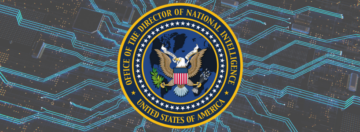Guidance from ODNI Needed for Use of Digital Information in Clearance Process

You may be a bit confused with the acronym-laden title of this post, and that is perfectly understandable. Unless you are a security professional it all seems like Greek. Simply put, the subject matter of this article is why guidance is needed from the Office of the Director of National Intelligence (ODNI) to collect and use Publicly Accessible Electronic Information (PAEI) in the Continuous Evaluation (CE) of security clearance holders. PAEI is also used to detect and thwart insider threats. In May 2016 the ODNI published Security Executive Agent Directive (SEAD) 5 – Collection, Use, and Retention of Publicly Available Social Media Information in Personnel Security Background Investigations and Adjudications. However, it only provided the basic authority and framework to allow Federal agencies to use social media in evaluating an individual’s continued eligibility for access to classified information.
Government security professionals and industry leaders have called upon the ODNI to provide specific legal and implementation guidance for PAEI. The Intelligence and National Security Alliance (INSA) published a white paper outlining the background and recommendations for use of PAEI in security clearance decisions. What types of information are we talking about here? Here are the immediate platforms and data that come to mind:
- Facebook, Twitter, LinkedIn, YouTube, Instagram, other on-line forums
- Credit reports, bankruptcy records, tax information
- Arrest records, vehicle and weapons registration, driver’s license record, civic activities
The paper noted that decision points and guidance are still needed from ODNI regarding the collection and use of PAEI. Specifically, defining what sources of information are relevant to the security clearance process and how the data can be used within the legal framework of current policy. Another area of focus prompting a recommendation was ensuring all agencies evaluate, validate, and adjudicate PAEI consistently across the board. An important conclusion and one of the main purposes for this INSA product was to highlight the importance of collecting PAEI through the use of artificial intelligence and automated technology and making it adaptable to changes. This in turn, would help speed up the security clearance process and reduce the investigation backlog.



Start the discussion